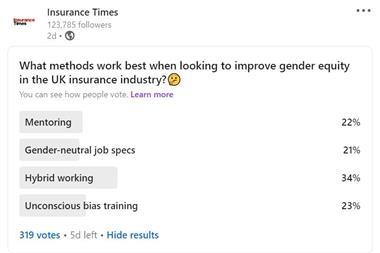If the school’s approach is adopted, insurers will be required to collect data on protected characteristics, which ‘raises privacy concerns’, says expert
Bayes Business School - part of City, University of London - has developed an artificial intelligence (AI)-based method that aims to stop proxy discrimination in insurance pricing models.
Discrimination by proxy occurs when insurers allegedly offer different insurance prices based on facially neutral traits that are correlated with protected groups and are predictive of losses.

According to research co-authored by the school – entitled A multitask network approach for calculating discrimination free insurance prices and published July 2022 – protected characteristics are still indirectly impacting insurance pricing models, despite this being against the law.
For example, policyholders’ postcodes are commonly used in the calculation of their insurance premium – this could be considered a proxy for determining ethnicity.
The report further found that for motor insurance, younger members of one minority ethnic group were typically quoted higher premiums compared to quotes where data on ethnicity was not included.
Charity Citizens Advice revealed similar findings following an investigation in March 2022 - it believes there is an ”ethnicity penalty” in motor insurance pricing.
Bayes Business School’s leading expert in actuarial science and risk management, Professor Andreas Tsanakas, explained that “proxy discrimination is a real issue” that needs to be “addressed in pricing”.
To do this, “insurers need to collect information on protected characteristics, which raises privacy concerns”, he added.
AI supported pricing
Bayes Business School’s proposed method for tackling proxy discrimination makes risk predictions for policyholders that are based on all available characteristics – including protected ones such as gender or ethnicity.
Read: Socioeconomic inclusion demands greater insurance industry effort
Read: Amanda Blanc - Not enough women are at the top in insurance
Read more news articles here and discover more diversity and inclusion content here.
These are then mathematically uncoupled from other variables to determine insurance prices.
The school emphasised that this method only requires the collection of sensitive information from a small subset of policyholders in terms of protected characteristics.
Although, given potential concerns around privacy, Tsanakas stressed that it is “important that strict protocols are introduced by regulators about how such information is collected and used, [as well as] how this process is explained to policyholders”.
Accrording to the Equality and Human Rights Commission, protected characteristics consist of age, disability, gender reassignment, marriage and civil partnership, pregnancy and maternity, race, religion or belief, sex and sexual orientation.
It is against the law to discriminate against someone because of these characteristics under the Equality Act 2010, which came into force on 1 October 2010.
However, it is lawful for an insurance provider to factor age or disability into quoted insurance premiums if these traits cause a greater insurance risk.
Ronald Richman, chief actuary at Old Mutual Insure, added: “Our findings can offer practical solutions, while highlighting the dilemmas that policymakers need to navigate [and] providing tools to the industry to adjust pricing while maintaining competitiveness.”
Alongside Tsanakas and Richman, authors of the aforementioned July 2022 report include Stockholm University’s associate professor Mathias Lindholm and Mario Wüthrich – professor at public research university ETH Zurich.












































No comments yet